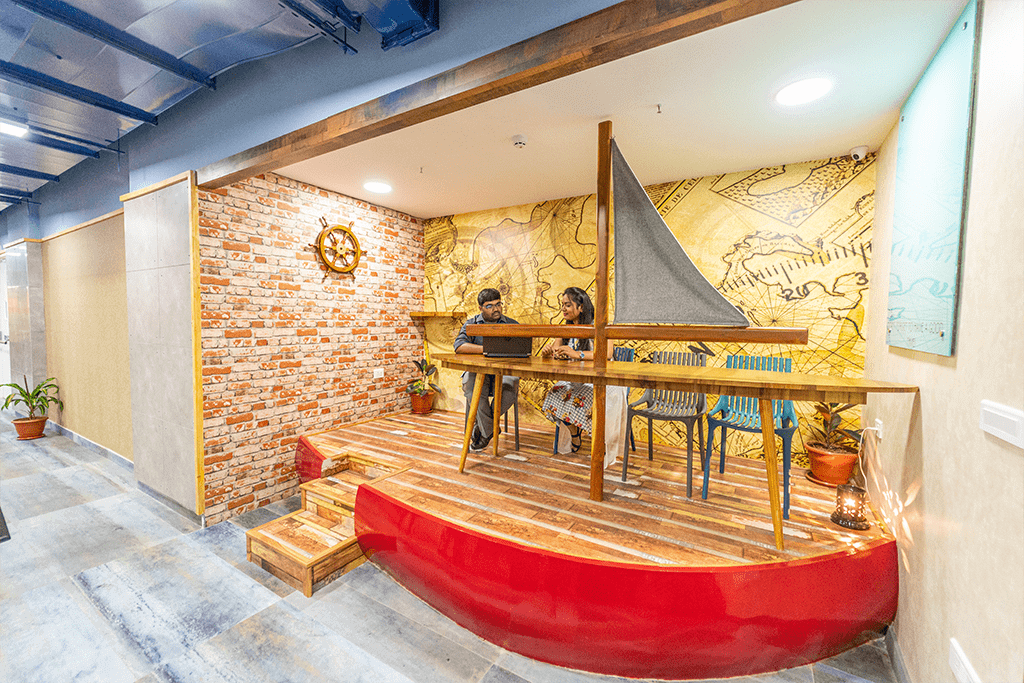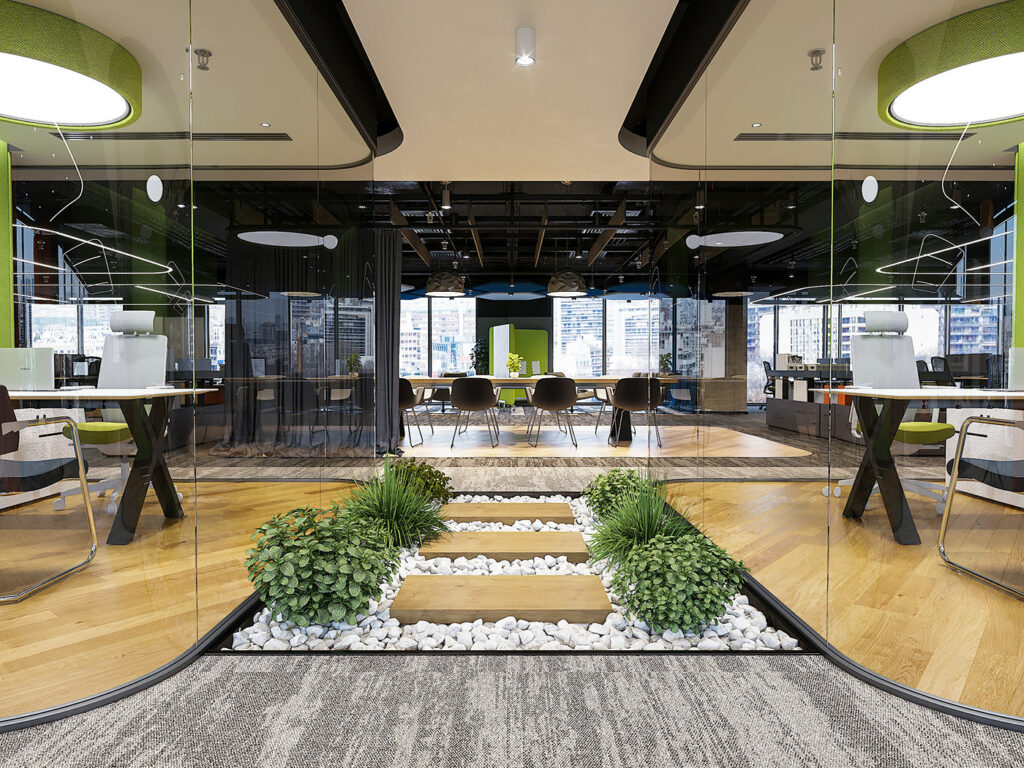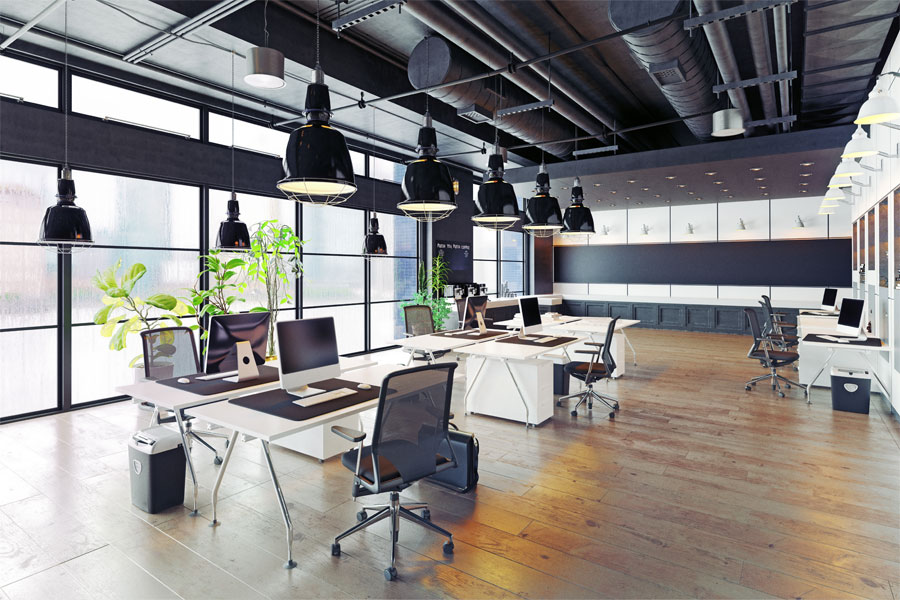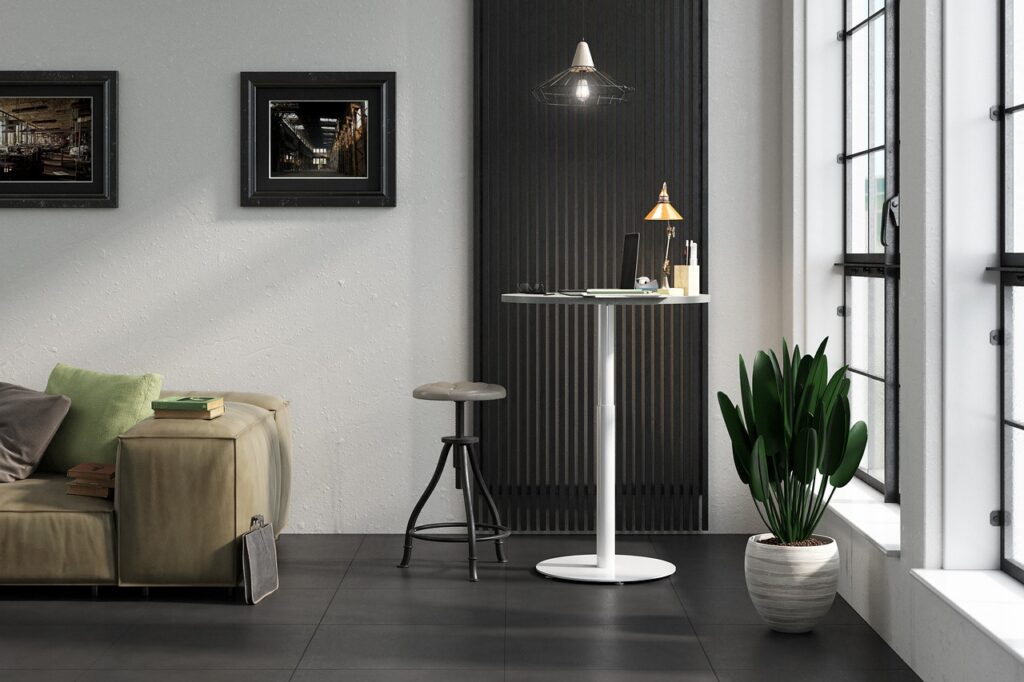The landscape of commercial interior design is constantly evolving, mirroring the changing needs of businesses and the workforce. Interior design for commercial spaces is no longer just about aesthetics; it’s a strategic tool used to create functional, inspiring, and brand-reflective environments. So, buckle up and get ready to explore the hottest trends that will transform your commercial space in 2024 and beyond!
1. Biophilic Design: Nature’s Embrace
The connection between humans and nature is undeniable. Interior design for commercial spaces is embracing biophilic design principles, incorporating elements that evoke the outdoors. Think:
- Abundant greenery: Liven up the space with a variety of plants, improving air quality, reducing stress, and fostering a sense of calm.
- Natural materials: Wood, stone, and other organic elements create a tranquil atmosphere and promote a connection with nature.
- Natural light: Maximize natural light with skylights and large windows whenever possible. Strategically placed task lighting ensures optimal visual comfort throughout the day.
2. Embracing Flexibility: A Space that Adapts
Gone are the days of static workspaces. Modern businesses thrive on agility, and interior design for commercial spaces reflects this. Here’s how:
- Open floor plans with designated areas for focused work, brainstorming sessions, and relaxation. Modular furniture allows for easy reconfiguration to suit changing needs.
- Activity-based working: Cater to diverse work styles by offering a variety of zones, from quiet nooks for individual tasks to collaborative co-working areas.
3. Technology Integration: A Seamless Workflow
Technology is an indispensable part of the modern workplace. Interior design for commercial spaces should seamlessly integrate features like:
- Wireless charging stations for mobile devices, keeping employees connected without the clutter of cords.
- Interactive whiteboards and digital displays to enhance presentations and brainstorm sessions, fostering a culture of innovation.
- Smart building systems that adjust lighting and temperature based on occupancy and preferences, creating an energy-efficient and adaptable environment.
4. The Wellness Revolution: Prioritizing Employee Wellbeing
Employee well-being is no longer an afterthought. Interior design for commercial spaces incorporates elements that promote physical and mental health, such as:
- Ergonomic furniture: Invest in comfortable, adjustable furniture that promotes good posture and minimizes fatigue.
- Natural light and ventilation: Create a healthy and stimulating environment that reduces eye strain and promotes alertness.
- Dedicated wellness areas: Break rooms with healthy snacks and relaxation zones can boost employee morale and create a positive work environment.
5. A Touch of Home: Cultivating Community
The modern workplace is often described as a “second home.” Interior design for commercial spaces can cultivate a sense of community by incorporating:
- Comfortable lounge areas with inviting furniture for informal conversation and idea sharing.
- Break rooms equipped with coffee bars or game tables to encourage interaction and relaxation.
- Personal touches: Allow employees to personalize their workspace to a certain degree, fostering a sense of ownership and comfort.
Conclusion: A Space that Inspires
Interior design for commercial spaces is more than just trends; it’s about creating a space that reflects your brand identity, fosters employee well-being, and inspires peak performance. By incorporating these trends and working with skilled designers, you can transform your commercial space into a vibrant hub that fuels creativity, collaboration, and success. Remember, your workspace is a powerful tool; use it wisely!





